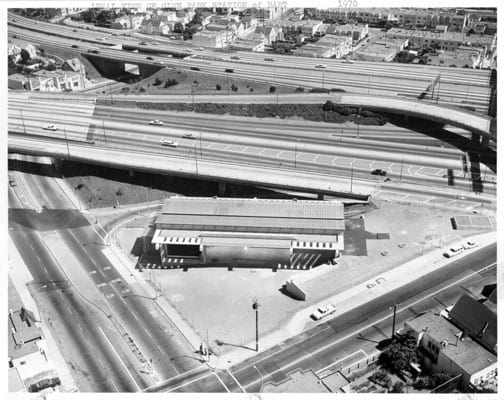
By Bonnee Waldstein
Those who attended, and presented, at the most recent Glen Park Community Plan update on June 22 discovered that late June is not the best time to hold a meeting about anything. There were about a dozen or so regulars who came out to hear about how the Glen Park Community Plan evaluated possible historic sites in Glen Park.

Identifying such sites means that future plans will take the historic importance of such structures into account in any projects. However, it does not confer automatic landmark status on anything. Nor does it freeze a structure in time. It just identifies sites that have one or more of the following characteristics: historic importance as the place where an event took place; the site of an important person; or, architectural significance — this last being the most subjective or open to debate.
Through a walking tour conducted through a contract with the Planning Commission, seven sites in the village, more or less, were identified. Most residents of Glen Park know we’re not exactly on the Barbary Coast trail — not even close — nevertheless we can claim some preservation-worthy gems. N. Moses Corrette of the Historic Resources Survey Team of the Planning Department went down the list at the meeting. Since it is rather short, here it is in its entirety:
657 Chenery Street: Constructed in 1872, one the oldest surviving residential structures, located within the commercial district.
813-817 Chenery Street: Residence constructed in 1907, associated with the early development of the neighborhood, featuring projecting bay window and inset entry porch.
831 Chenery Street: Residence constructed circa 1900, one of the earliest residential structures.
Glen Park Elementary School: Built 1934. Associated with San Francisco’s “Golden Age of Schools,” a New Deal property; architecturally significant.
601 Bosworth Street: The Glen Park Market on the corner of Bosworth and Diamond Streets. Built 1912, an early mixed-use building.
683 Chenery Street: Now the Chenery Park Restaurant. Built 1929, ornamented in a Spanish Eclectic revival style.
701-703 Chenery Street: Now the Glen Park Cleaners. Built 1904 in Eastlake architectural style. Originally a saloon, it’s the oldest commercial building in Glen Park.
2784-2786 Diamond Street: Constructed 1916. European styling relates to Swiss history in Glen Park (? German — perhaps they got this confused with the moniker Little Switzerland.”)
Glen Park BART Station: Constructed in 1970, one of eight stations in San Francisco. Distinctive butterfly roof utilizing railroad ties. Architects of the station, Ernest Born and Corlett and Spackman, are distinct from the architect of the plaza (Douglas Baylis), which is not included in the list.
These sites might seem a bit arbitrary, and Chenery Street-biased. According to Jon Swae, who is managing the Glen Park Community Plan, it’s because the original plan area, in addition to encompassing the village core, also included the area that would follow a possible greenway from the village to Glen Canyon.
Also part of the study, although there are no sites of significance is a small area south of San Jose Avenue, which could potentially see some improvements.
To see a map of the area covered by the study, go here:
Then take your own walking tour and check out these sites. If you make a new discovery be sure to let Moses Corrette know.
email: moses.corrette@sfgov.org